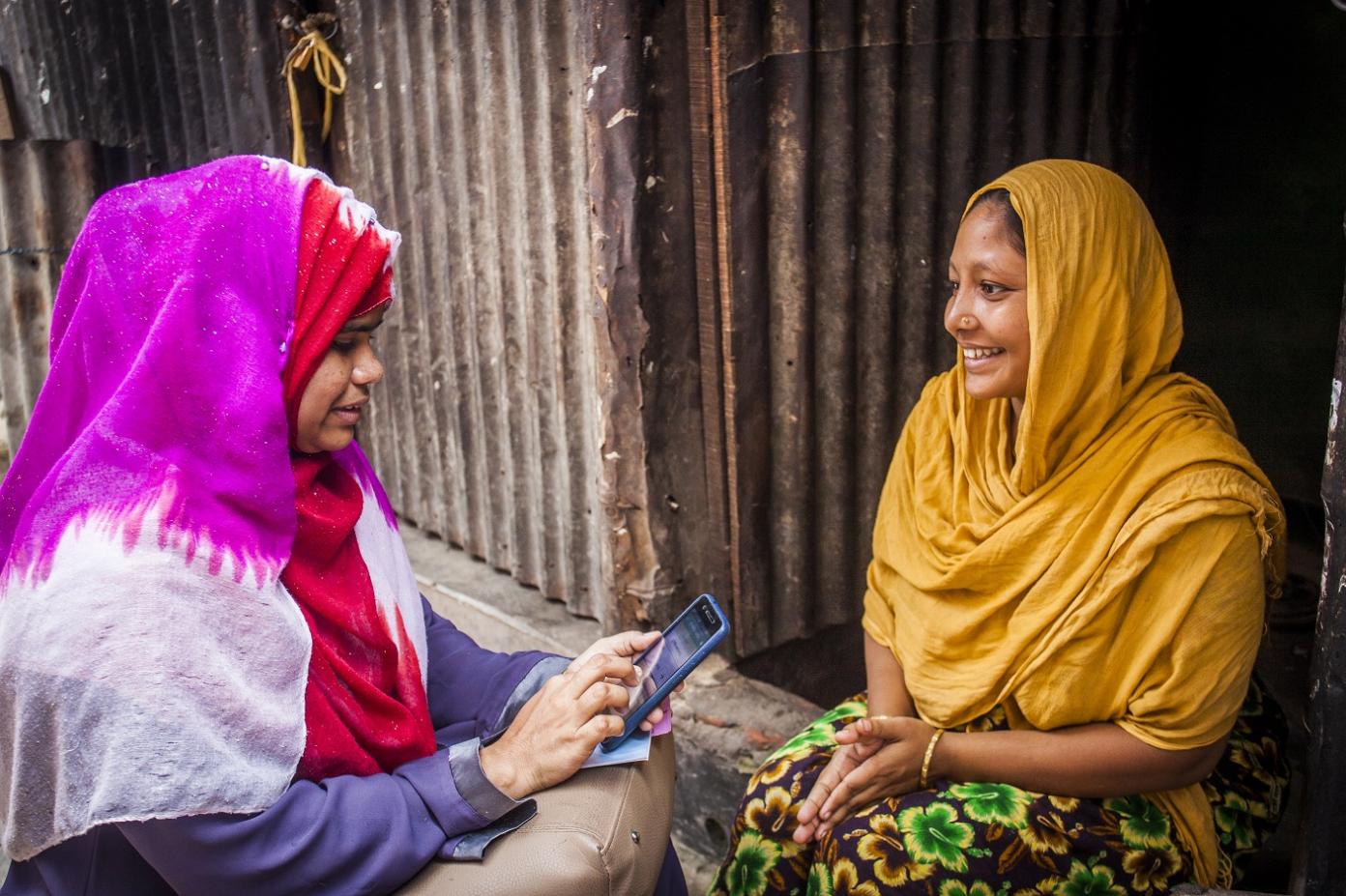Committing to bridging the digital divide in least developed countries
March 8, 2023

More women entrepreneurs need to be equipped with digital tools and skills to boost their businesses through e-commerce.
The crises of recent years--from the COVID-19 pandemic and political instabilities to climate challenges--have reversed global development progress in almost every country. Highly vulnerable least developed countries (LDCs) are often disproportionately impacted and bear the brunt of these cascading shocks.
We know that digital technologies can serve as an accelerant for the Sustainable Development Goals (SDGs), and can be applied to address many of the overlapping shocks. Yet LDC populations are among the most digitally excluded in the world: only 36 percent of the LDC population uses the Internet, compared to the global average of 66 percent. Multiple barriers hinder these countries from fully benefiting from digital technologies and the opportunities they provide:
Lack of infrastructure and weak connectivity: In the LDCs, more than one in six people still live in areas without mobile broadband coverage. The deployment of fixed broadband or mobile networks in the LDCs also remains a big challenge due to the high costs of building and deploying infrastructure, the lack of incentives for service providers, and the small population in rural and remote areas. As a result, only 28 percent of the rural population use the internet. Additionally, LDCs frequently experience internet shutdowns due to uneven and unreliable connectivity caused by countries’ higher exposure to climate hazards or systemic issues with the supporting infrastructure.
Low access to use and affordability of devices and the Internet: Alongside poor connectivity, high costs of both the Internet and devices contribute to low Internet access in LDCs. A mere 8 percent of LDC households have a computer, and 58 percent of the population own a mobile phone. The average price of a smartphone accounts for 53 percent of the monthly income in LDCs. The cost of network access is also high, with the median price of the fixed broadband basket being 18.5 percent of the average gross national income (GNI) per capita, while the global median price was just 3.2 percent. These factors, along with cultural norms, disproportionately impact marginalized groups, such as women: research shows that only 30 percent of women in LDCs were using the Internet as of 2022.
Poor digital literacy and adoption of digital technologies: Inadequate levels of digital skills and competencies result in lower adoption of technologies in LDCs. Students in some LDC countries are more likely to self-assess their digital skills as poor, which manifests in a weak adoption and use of digital technologies. Less than 10 percent of the population shops online in LDCs, and the use of the Internet for business purposes in Africa averages at 7 percent - ranging from 20 percent in Senegal to 1 percent in Rwanda. Furthermore, computer ownership for commercial purpose is low, with over 90 percent of businesses surveyed by UNDP in Mozambique, Rwanda, Tanzania, and Uganda not having even one.
Acknowledging the stark implications of the digital divide on development, UNDP is committed to addressing barriers and resulting inequalities with a whole-of-society, inclusive, and rights-based approach.
Globally, to ensure meaningful connectivity for all, UNDP works with multi-stakeholder alliances including the Broadband Commission for Sustainable Development, Partner2Connect Digital Coalition, and the Edison Alliance to make policy and regulatory recommendations and advance collective action on closing the digital divide at national and global levels.
At country level, UNDP focuses on addressing the digital divide by helping set national agenda and priorities for digital transformation, as well as fostering LDC’s national digital ecosystems:
- Shaping national digital transformation through the development of robust digital strategies, governance frameworks, and regulations. For example, in Mauritania, after conducting a Digital Readiness Assessment, UNDP helped refine country’s national digital agenda with a focus on digital inclusion. The need for reliable connectivity and a secure digital identity as foundational preconditions for governmental digital services has been recognized and reflected in the Mauritania’s digital transformation priorities.
- Implementing safe and trusted digital public infrastructure to ensure inclusive connectivity and foundational services like digital ID or payments for all. In Afghanistan, for instance, UNDP improved a digital payment system, allowing for greater financial inclusion and interoperability for financial services providers.
- Bolstering digital literacy and increasing usage of Internet, especially among groups that are most likely to be excluded. Such as in Bangladesh, where UNDP organized digital skills workshops for women-entrepreneurs to help spur post-pandemic recovery. In Nepal, UNDP worked with a local bank to empower rural women to use QR codes and do digital transactions.
UNDP’s commitment to leaving no one behind compels us to work together with countries and development partners to bridge the digital divide in LDCs, reduce their vulnerabilities to shocks, and set them back on a positive trend towards achieving SDGs with the power of digital technologies.
Vitalii Zakhozhyi and Anoush Rima Tatevossian also contributed to this blog post.

 Locations
Locations